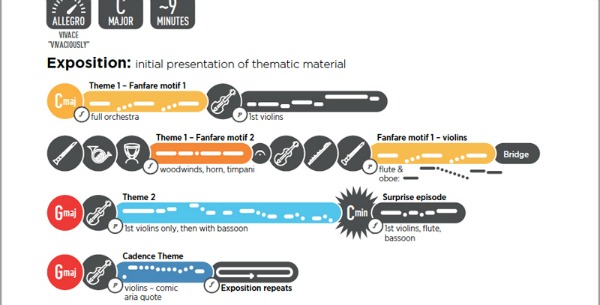 With traditional delivery/distribution for the arts changing, we’re looking at new models: Maybe Rotten Tomatoes or Netflix, anyone? We definitely have to change our ticketing model (and “Hamilton” is trying). A rethink of program notes. And some evidence that making “augmented activity” in movies leads to increased demand for the arts…
With traditional delivery/distribution for the arts changing, we’re looking at new models: Maybe Rotten Tomatoes or Netflix, anyone? We definitely have to change our ticketing model (and “Hamilton” is trying). A rethink of program notes. And some evidence that making “augmented activity” in movies leads to increased demand for the arts…
- A Rotten Tomatoes For Books? How are you choosing the books you read? There are reviews everywhere, of course, from Amazon to any number of literary publications. But what reviews to trust? For movies, there’s Rotten Tomatoes, which surveys all the major (and many minor) critics and gives each movie a rating. Now Book Marks aims to do the same for books: “Book Marks will showcase critics from the most important and active outlets of literary journalism in America, aggregating reviews from over 70 sources – newspapers, magazines, and websites – and averaging them into a letter grade, as well as linking back to their source.” Question is: while a quick aggregate scan of reviews might be fine for choosing a two-hour movie, is that really how readers want to choose their literary fiction? On the other hand, as an aggregator guide for finding the reviews that interest you, this might be very helpful.
- Speaking Of Choosing Books (and Netflix?)… We’ve had book-of-the-month clubs. We’ve had libraries. Now a major publisher wonders if it’s time for a Netflix model for books. In what way? Netflix has revealed the inner-binger inside of us. We consume entire seasons of TV shows in extended sessions. So might we binge books too? “Farrar Straus and Giroux believes the TV model can lend momentum to a book series. In a move that takes as much from Victorian novels as from limited-run Netflix series, the publisher’s FSG Originals imprint is experimenting with serialized fiction.”
- When Everyone Wants To See Your Show And You Want To Make As Much Money As Possible But Keep Tickets Affordable, What Do You Do? If you’re “Hamilton” and ticket bots are reselling your tickets for obscene sums, you jack up the high-end seats and simultaneously find a way to keep low-end tickets cheap. “The paired moves – raising the price for premium seats to $849 while offering 46 seats per show at $10 each – are part of a broader effort to stanch the loss of tens of millions of dollars in potential revenue to scalpers, and to make the show available to people who can’t afford costly theater tickets.” Will it work? Even the high-end tickets will likely get scalped, so how will this stop the secondary seller market?
- Why Are Program Notes For Classical Music Always Words? Is that really the best way to give people insight into music? The Toronto Symphony has a different idea. Pictograms. “The Toronto Symphony Orchestra’s ‘listening guides’ make use of symbols and Morse code-like notation to aid the experience of a live performance.” It’s color coded to help make the relationships clear. So what else could help? Textures? Graphs? Pictures? Seriously – contexualizing music doesn’t just have to be delivered as text. Maybe visually- or aurally-inclined people might understand better in another medium…
- Seems Like Only Last Week They Were Saying Streaming Live Theatre Cannibalized In-Theatre Audiences: And so they did. So now for something completely different: “The Live Cinema in the UK Report 2016 defines live cinema as films augmented with additional activity, including soundtracks played live by musicians, site-specific screenings, and interactive singalongs. This is distinct from event cinema – such as live and recorded screenings of theatre and opera – though the two have a comparable economic impact. In 2014, Secret Cinema’s live cinema production of Back to the Future grossed £3.5m, while the National Theatre’s event cinema screenings of War Horse grossed £2.9m.” So what to make of it?
[…] This Week In Audience: A Rotten Tomatoes Model? A Netflix Model? Or Maybe A Little Live Streaming Wi…With traditional delivery/distribution for the arts changing, we’re looking at new models: Maybe Rotten Tomatoes or Netflix, anyone? We definitely have to change our ticketing model (and “Hamilton” is trying). A rethink of program notes.… … read moreAJBlog: AJ Arts AudiencePublished 2016-06-13 […]